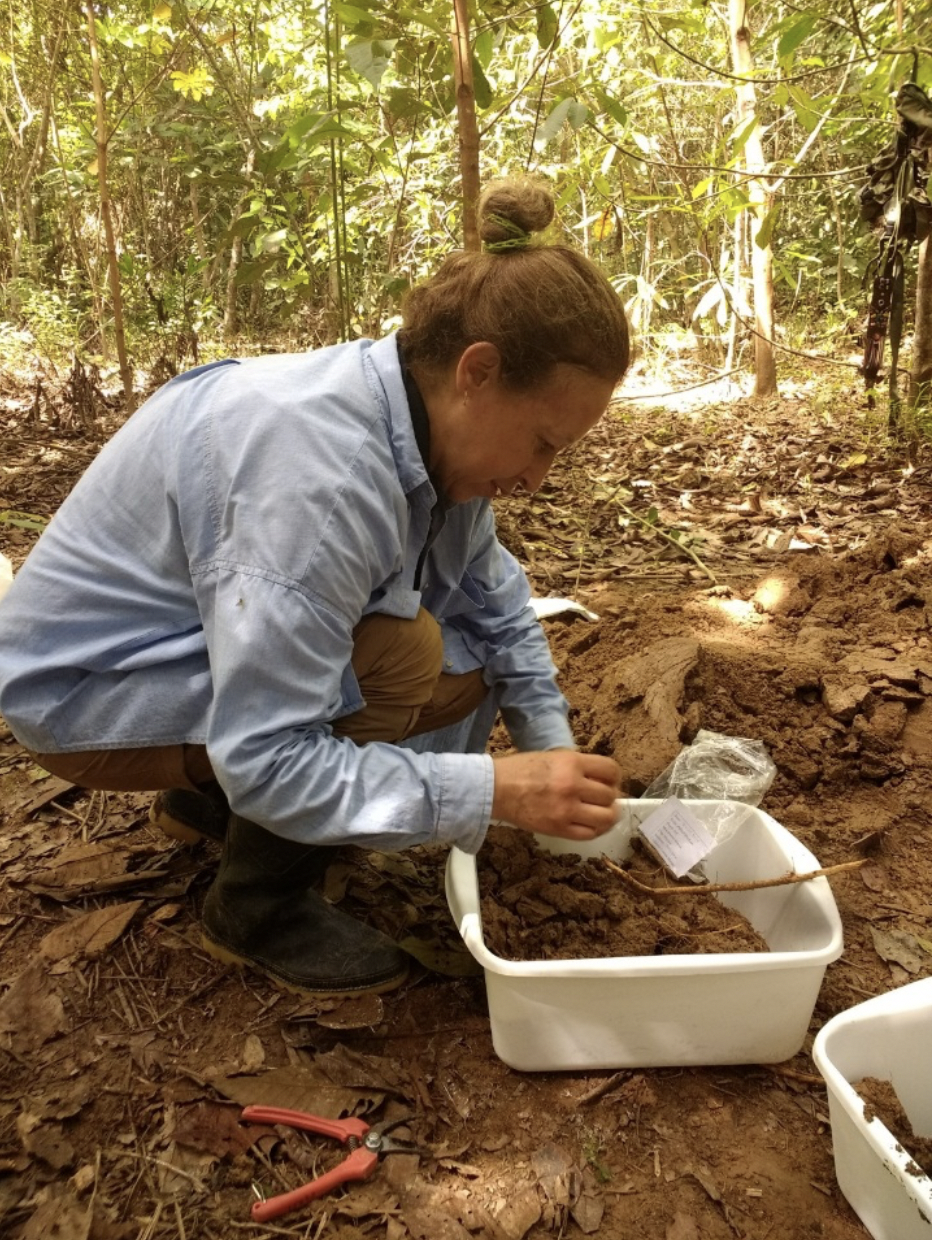
Posted by Mark
10 September 2019The BioResilience soil field team is currently led by Dr Carmen Montes, Universidad Nacional Abierta y a Distancia UNAD de Colombia, in collaboration with Dr Julieth Serrano and Dr Ted Feldpausch (project PI) from the University of Exeter, UK. Dr Montes went to the field to sample soil at 12 plots at La Serrania de las Quinchas (Puerto Pinzón, Puerto Boyacá, Boyacá, Colombia). This region on the western flank of the Andes Eastern range mountain has elevations between 250 m to 1500 m a.s.l. (Figure 1). The average temperature is 27 °C in the low zones and 23 °C in the high mountain. Relative air humidity varies between 79% and 88% (Ovalle-Pacheco, Camacho-Rozo, & Arroyo,2019).

Figure 1. Study area, Serrania Las Quinchas, Puerto Pinzón, Puerto Boyacá, Boyacá, Colombia. The area chosen in yellow contains nine triangles (yellow, pink and green) indicating forest plots at different successional stages. Three yellow circles show plots with pastures associates to trees.
The protected area with the natural reserve El Paujil (Puerto Pinzón, Puerto Boyacá) has well-conserved woodlands (Figure 2) and forest with different successional stages. Nonetheless, the vegetation is highly modified outside of the reserve (Figure 3). It is common to find pastureland associated with trees (Figure 4) between Puerto Pinzón and Puerto Boyaca.
Land-use change has transformed terrestrial ecosystems to provide space and resources for cropland and livestock. Sometimes, these changes represent a significant shift from structurally intact ecosystems and may induce changes in soil fertility and carbon storage. Our understanding of change and resilience to degradation of Andean soil properties is important to support decision-making about management options. These options aim to maintain food production, freshwater, erosion control, spaces for ecotourism and species habitat.
Human occupation of the Colombian Andes dates back to pre-Colombian times (Etter.2000. Ambio. 29). From the 1950s, population pressure on ecosystems increased due to urbanisation, agriculture, cattle ranching and internal migration (Armenteras 2013). Today only about 32% of forests remain (Armentera and Pascual 2011) and some predictions project an additional 30% loss of forest cover by 2050 (Baptiste 2017; Rodríguez Eraso, 2013). Nonetheless, our understanding of how Andean soils properties vary in response to disturbance is limited.

Figure 2. Two of the forest plots where the Bioresilience project sampled soil: “El Paujil, Natural reserve” (Puerto Pinzón, Puerto Boyacá, Boyacá, Colombia).

Figure 3. Deforested area at Puerto Pinzón, Puerto Boyacá, Boyacá, Colombia.

Figure 4. Pastures at Puerto Pinzón, Puerto Boyacá, Boyacá, Colombia.
The project aims to deliver improved understanding of drivers of variation in soil properties and functional variation, e.g., C storage, human-modified socio-ecological systems, especially regarding fire, in comparison to more ‘intact’ systems.
To advance the research, Dr Montes and field assistants sampled soil at La Serrania de las Quinchas, including collecting 1356 soil samples. We also sampled bulk density, roots, and fallen leaves and twigs. Samples will be analyzed for phytoliths, pyrogenic carbon, and soil physicochemical properties. A subset of charcoal samples will be radiocarbon dated to determine the fire history of the region. We will estimate carbon storage in roots and fallen leaves and twigs (Figure 5 and 6). In the lab at Universidad Nacional Abierta y a Distancia we determined bulk density, dry weight of roots and we prepared the samples for physicochemical analysis (Figure 7).

Figure 5. We are taking soil samples to understand the effect of land-use change on soil properties.
We will use these soil samples to examine nutrients and texture variation, and contributions of roots and fallen leaves and twigs to soil organic carbon. Combined with samples from across climate and elevation gradients, we will evaluate how soil fertility, fire regime, and soil carbon storage change with land-use change and climate.

Figure 6. Sampling fine roots (left) and macro-charcoal (right)

Figure 7. Preparing soil sampling for analysis by a lab assistant at the Universidad Nacional Abierta y a Distancia – UNAD.
Text by Carmen Montes and Ted Feldpausch
Photos by Carmen Montes